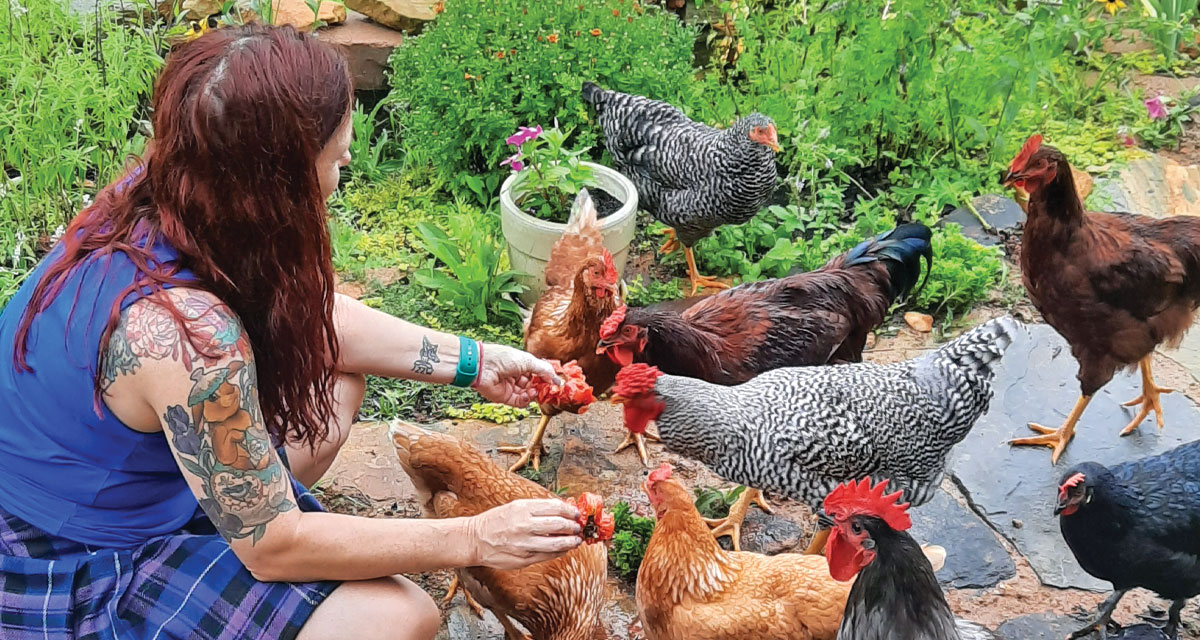Text: “I must be crazy. We’re heading to Winston to buy two Polish hens.”
Text: “Where did you find them? Oh, please, send pictures!”
Text: “Thanks for the suggestion! I got 14 ISA browns from Tony. They flew into the run and started eating with the others. I have 35 now!”
Text: “Let’s see, we have 10 chicks, 5 teenagers, 12 hens, 1 rooster, and 4 Guineas. You win today!”
Call it a hen party! Like-minded friends share the arrival of new additions, whether hatched or purchased, as well as helpful tips for housing, feeding, and boosting health. It is a misconception that chickens are filthy, unintelligent birds. Any neglected or unkempt animal will lead to disease or odors if their housing is not well maintained. Some four-legged animals lick, while fowl come together to bathe. Using their bodies, wings, and feet to move and flick sand and soil between their feathers, this social act is similar to the enjoyment of a spa treatment! Afterward, they collectively stand and shake out the dust!
Create a Clucking Call
Dog lovers find their four-legged friends parting curtains and waiting by the door with happy pants and tail wags; roosters and hens, on the other hand, also can distinguish sounds and voices, and up to 100 different animal and human faces. Free-range hens will leave their weed-eating and insect consumption habits to bound, by flapping wings, flying or running, toward the call of a human, knowing treats are available in the form of lettuce, cucumber, tomato, or other in-season fruits and vegetables. It’s easy to develop a sweet relationship with the beautiful hen who chirps and follows you in hopes of receiving a treat. It’s difficult not to give her a term of endearment, a name personifying her coloring, character, or temperament!
The Gift of Fresh Eggs
With names such as the Jersey giant, Russian Orloff, the Sebright, and the Sapphire Gem, hens come in an array of beautiful colors and varieties, such as powder greyish-blue, black with blue-green feathers, patterns of black and white, or shiny, sleek feathers. From calming, clicking sounds to purrs, and to the loud rhythmic cadence of laying an egg, hens can alert the flock when predators arrive, or show signs of stress by losing feathers. Indications of health come from their eggs. An oyster shell supplement ensures a hardened shell; yet, the breed determines the color of the oval protein (yolk), which may span from dark brown to tan, light-peach to white. Easter eggers, the Ameraucana and Cream Legbar, lay variations of hue in blue, pink, and green. Strong layers, such as the sweet Golden Comet, and the friendly Speckled Sussex can provide 280 eggs a year. While feeding on the occasional vegetable or fruit, chickens consume a scratch grain comprising corn, seeds, oats, wheat, and barley, and forage for grass and clover, insects and slugs. Collectively, the well-rounded diet defines the color of the yolk. Darker orange colors offer excellent nutritional value.
The Beloved Protector
The male of a flock, a rooster, or also termed a “cockerel,” is recognizable by the tall, red comb on top of his head, fleshy wattle hanging below the beak, and the attractive long feathers at the neck and tail. His strut and tall stature, as well as his bright coloring, encourage the hens to follow his lead to food or away from danger. Dragging his wings and hopping forward and backward is his version of romance. Sometimes she’ll surrender and allow a mount, or sometimes escape. Competition from other roosters may result in chasing or fighting, or a hen defending herself by plucking out a few feathers of the unwanted cockerel. Politics and strength play a vital role in every group, especially the pecking order of chickens.
To Love a Chicken
Young children learn responsibility in caring for the daily needs of a flock, from offering food and water to collecting eggs. Cleaning takes place by donning gloves, wearing designated “chicken boots,” and washing hands thoroughly with every visit. With or without a rooster, the flock signifies a therapeutic routine of greetings and visitations, before closing the coop door before dusk.
You, too, can join the hen party, and add one more species to the list!























